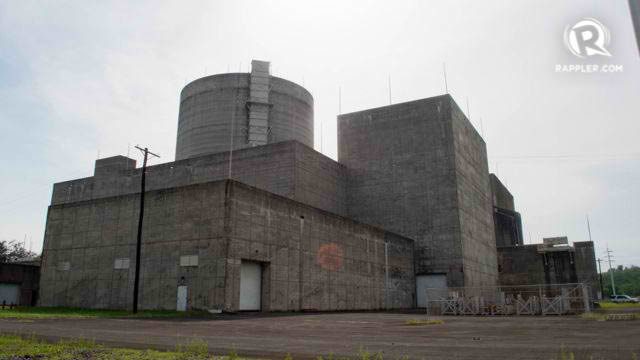SUMMARY
This is AI generated summarization, which may have errors. For context, always refer to the full article.

The Department of Energy has said it is considering revisiting nuclear power in general, and rehabilitating the Bataan Nuclear Power Plant (BNPP) in particular. Yet important questions persist, particularly since the BNPP remains one of the most glaring examples of white elephant projects.
Large scale government projects that turn into heavy burdens for society are often called “white elephants.” Legend has it that the term emanated from the King of Siam who gave white elephants as gifts to obnoxious courtiers. The white elephants are costly and less productive, imposing a burden on their new owners.
Similarly, white elephant megaprojects impose a severe burden to society in different ways – crowding out other investments, imposing severe damage on the reputation of government institutions, and debilitating public trust.
And the BNPP fits the bill.
The Philippines paid BNPP-incurred debt annually from 1987 to 2007, totaling roughly US$2 billion. The entire debt was finally retired in 2007, over three decades since the project was initiated in Morong, Bataan. This plant failed to generate even a single watt of electricity for commercial use.
In this article I argue that the discussion on the BNPP should not be equated with the discussion of nuclear power feasiblity. Yet we should still acknowledge that the weak governance and obvious state capture associated with the BNPP leaves many unanswered questions regarding the country’s ability to manage nuclear power.
Corruption and rent-seeking
Despite the promise of boosting the country’s energy supply, the BNPP from the very beginning was hounded by anomalies. Reports suggest that the selection of the BNPP contractor, Westinghouse Electric, did not follow the proper bidding process. Perhaps part of the reason was that Westinghouse hired Herminio Disini, golfing partner and crony of former president Ferdinand Marcos, as their sales agent. Thanks to Disini’s political connections, Westinghouse eventually clinched the contract for the BNPP in 1976.
Originally, Westinghouse proposed to build two nuclear reactors for a reported cost of US$500 million (US$200 million less than competitor GE’s proposal). However, by the time the contract was signed, the cost escalated to US$1.1 billion for a single reactor so the cost balooned to more than twice its original value. Calculations of the National Computer Center revealed that the single BNPP reactor was overpriced by at least US$75 million compared to similar Westinghouse plants being constructed at that time in Yugoslavia, South Korea and Taiwan.
Damaging national psyche on debt and nuclear power

As I noted in an earlier article, the Presidential Commission on Good Government (PCGG) filed corruption charges against Herminio Disini, whose wife is the first cousin of first lady Imelda Marcos, and whose firm brokered the BNPP project. Westinghouse later testified in a US court that they paid Disini over US$17 million to help acquire insurance, telecommunications and civil works subcontracts for the BNPP without competitive bidding. Later, Disini’s cousin, Jesus Disini, also admitted to the same court that President Marcos himself received part of this pay-off because he was co-owner of the group of companies headed by Herminio Disini. (READ: Ferdinand Marcos’ economic disaster)
In 2012, the Sandiganbayan finally ruled on the matter and held Disini accountable for approximately USD50 million and asked to reconvey such amount, which was further affirmed by the Supreme Court. But by 2014 Disini passed away, leaving the reconveyance of this amount in uncertain terms.
The corruption case behind BNPP was one of many filed in the country to no avail, reflecting what some analysts consider to be low conviction rates against large scale graft and corruption. Based on recent estimates using data from the PCGG, only about 40% of the Marcoses’ estimated US$10 billion ill-gotten wealth has been retrieved by the Philippines.
Reviving the BNPP?
A geological study by Professor Alfredo Lagmay and colleagues published in 2012 by the Geological Society of London found evidence that possible volcanic activity in the vicinity of the BNPP could definitely affect its operations. They further concluded that: “According to the IAEA draft guidelines, there is no engineering design that can address this type of hazard for a nuclear power plant.”
Furthermore, the US Nuclear Regulatory Commission notes that in case of an accident: “the ‘plume exposure pathway’ has a radius of about 10 miles where there could be an exposure to radioactive materials. The ‘ingestion pathway’ is about 50 miles in radius to prevent potentially contaminated food, water and vegetation from being consumed.” Given this radius, many heavily populated cities (including those in Metro Manila) remain within or very near the possible ingestion pathway. Makati City, for example is within the 50 mile radius of the BNPP.
Should this be cause for concern, if the plant is rehabilitated and activated? If we consider other locations, will the benefits from operating nuclear power far exceed the risks involved?
Indeed, a seemingly strong case can be made to revisit nuclear energy as a reliable and more cost-effective alternative energy source for the country. Professor Nani Roxas of AIM, an energy policy expert, mentioned to me that nuclear plants are now available in modular 20 MW units that can be connected to a grid and that can start generation within as short as 6 months of delivery. These modular units fit our country’s archipelagic nature (characterized by fractured demand) that is relatively more costly to serve with a comprehensive submarine cable network.
As regards safety, millions of people in industrialized countries live near nuclear power plants. In the US alone, almost one-third of Americans live within 50 miles of a nuclear power plant. So perhaps the issue is not about nuclear power per se.
The real question is whether government bureaucracy (if state owned and operated), a private sector partner (if PPP), and state regulatory institutions (for either scenario) can be trusted to operate and manage this energy source with the highest safety standards and accountability. Therefore, how the BNPP case was handled and the continued lack of accountability of the chief architects of this white elephant project is instructive.
Put more simply: if government institutions can’t even put the thieves who set up the BNPP in jail, then can we really expect our people to trust government institutions to revive plans for nuclear power and this time execute it well? – Rappler.com
Ronald U. Mendoza is the Dean of the Ateneo School of Government. The views expressed in this article are the author’s and do not necessarily reflect those of the Ateneo de Manila University. Readers may wish to learn more about the BNPP by turning to the full case study available here.
Add a comment
How does this make you feel?
There are no comments yet. Add your comment to start the conversation.